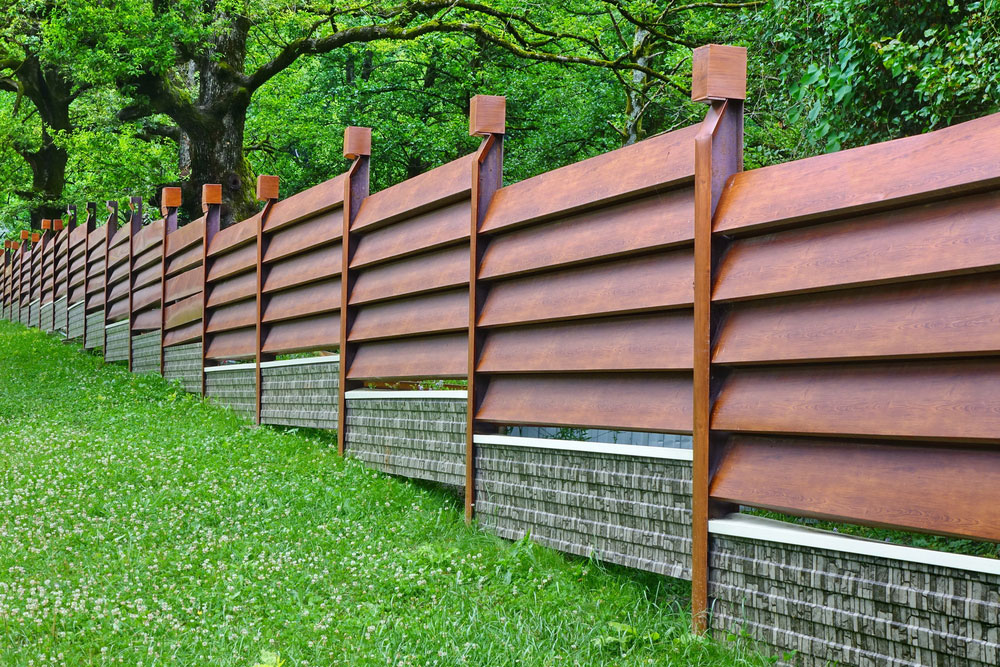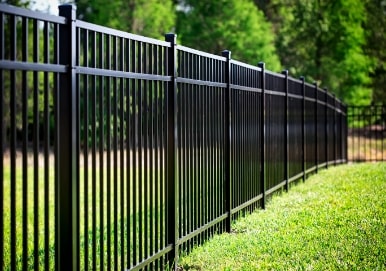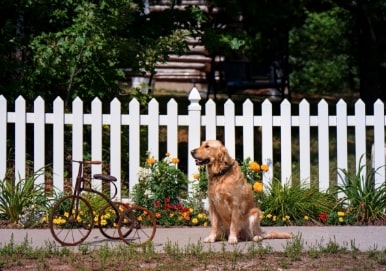Installing a fence in your backyard is a great way to boost privacy, security, and curb appeal. Nevertheless, what if your yard isn’t flat? Installing a backyard fence on a slope takes a bit more planning and effort than a typical fence.
Uneven ground can make things challenging, but with the right approach, you can still get a clean, strong fence that looks great. Whether you’re a DIY enthusiast or just trying to understand the process before hiring help, this guide will walk you through it.

Why Slopes Make Fence Building More Challenging
Flat yards make fence installation pretty straightforward. However, when the land rises or falls, extra steps are needed to keep the fence strong and aligned. One big challenge is getting the fence to follow the slope while still looking even. A fence that doesn’t match the shape of the land might leave large gaps, lean over time, or look off-balance.
Drainage can also be a concern. Rainwater runs downhill, and poor planning can lead to soil washing away from your fence posts. That’s why it’s important to take your time and work carefully with the slope of your yard.
Choose a Fence Style That Works with Your Slope
Stepped Fencing
This method uses straight panels that “step” up or down along the slope. Each panel stays level, but the bottom of the fence rises or lowers with the terrain. It’s a good choice for steeper slopes.
Racked Fencing
Racked fences angle the panels so they follow the land more closely, without steps. This method works best with gradual slopes and flexible materials like aluminum or vinyl.
Think about your landscape, fence material, and how you want it to look. Wood, vinyl, and aluminum all work well on slopes, but some are easier to shape than others.
Tools and Supplies You’ll Need
Before you begin, gather the right tools and materials. Having everything ready will make the job go smoother. You’ll need:
- Tape measure
- Level
- String line and stakes
- Post hole digger or auger
- Shovel
- Gravel and concrete mix
- Screws or brackets
- Fence panels and posts
- Circular saw (for wood fences)
It’s also a good idea to check local building codes or HOA rules. Some areas require permits or have specific height and boundary rules.
Planning Your Backyard Fence on a Slope
Careful planning is the first step toward success when building a backyard fence on a slope. Start by walking your property and marking the fence line with stakes and string. Use the string to visualize how your fence will follow the slope.
After that, measure the total distance and note where the land rises or falls. This will help you decide where each post and panel will go. If you’re doing a stepped fence, figure out how much of a step is needed between each section. For racked fences, plan for a steady angle to match the slope.
Don’t rush this part. A little extra time planning can save you hours of frustration later.
Step-by-Step Fence Installation on a Slope
Mark the Fence Line
Use stakes and string to outline where your fence will be installed. Double-check that you’re staying within your property line. Measure distances between posts to match your fence panels.
Dig Post Holes
Using a post hole digger or auger, dig each hole at the planned locations. On sloped ground, post holes may vary slightly in depth. Each one should be deep enough to support the post, usually about a third of the post’s height.
Add a few inches of gravel at the bottom of each hole to improve drainage and help the post stay upright.
Set the Fence Posts
Place each post into the hole, then pour in concrete to hold it in place. Use a level to keep the posts straight and upright. It’s best to work on one post at a time and wait for the concrete to set.
For slopes, make sure the tops of the posts form a smooth, even line. This might mean trimming some posts later.
Attach the Panels
Once the posts are secure, you can install the fence panels. For stepped fencing, keep each panel level and connect them higher or lower as the land changes. Racked fencing will need flexible panels that match the slope.
Use brackets or screws to secure the panels to the posts. Check for gaps at the bottom, especially if pets or small children will be using the yard.
Inspect Your Work
Walk along the fence line and check for stability and alignment. Fix any loose parts or uneven panels. The fence should feel solid and look balanced from a distance.
Finishing Touches and Upkeep
After the fence is up, take a few steps to make it last longer. If you’re using wood, apply a weather-resistant stain or paint. This helps protect against moisture, sun, and bugs.
Vinyl and aluminum fences need less care, but it’s still good to check them now and then for loose fasteners or leaning posts. On a slope, water can flow quickly and erode soil around the posts. Consider adding landscaping like gravel or mulch at the base to help control water and support the structure.
When You Might Want Professional Help
While a backyard fence project is doable for many homeowners, sloped ground makes things more complicated. If your yard has a steep grade or rocky soil, a professional installer can save you time and stress.
Companies like Good Neighbor Fence have the tools and experience to handle complex layouts. We can also offer long-lasting materials and workmanship warranties, so you know your fence will hold up over time.
How We Can Help
Building a backyard fence on a slope doesn’t have to be overwhelming. With the right tools, clear planning, and a step-by-step approach, you can create a fence that looks great and stays strong. Whether you go with a stepped design or a racked one, working with the land—rather than against it—makes all the difference.
At Good Neighbor Fence, we bring over 20 years of experience building high-quality fences for homeowners and businesses across Richmond, Fredericksburg, and Williamsburg. As a family-owned and locally operated company, we take pride in using in-house crews—not subcontractors—so you always know who’s working on your property.
We specialize in aluminum, vinyl, chain link, and custom wood fences, and all of our installations come backed by manufacturer and workmanship warranties. Whether you need help installing a backyard fence on a slope or choosing the right style for your home, our team is here to help every step of the way.
Get a quote today.





